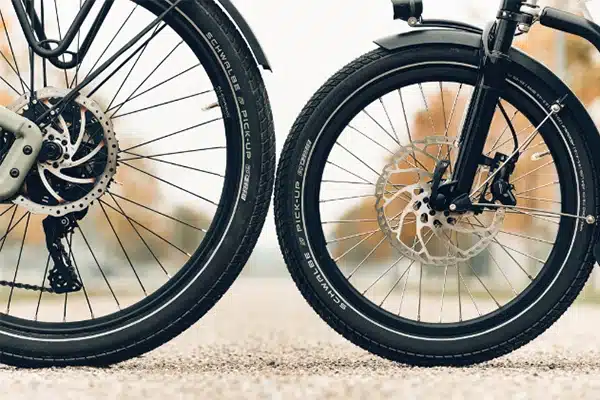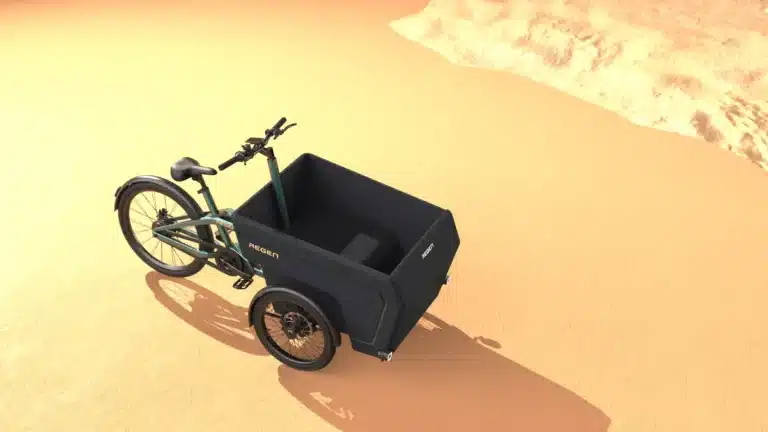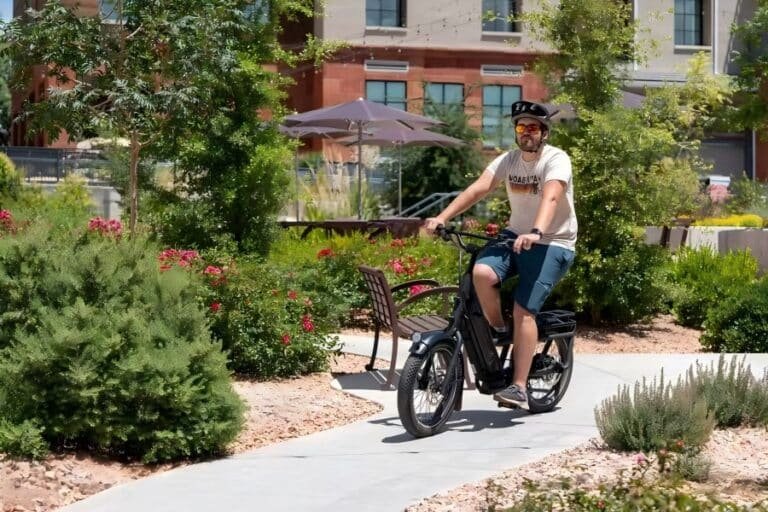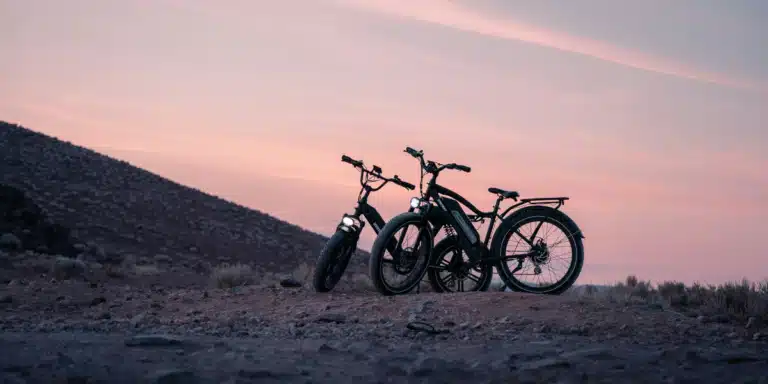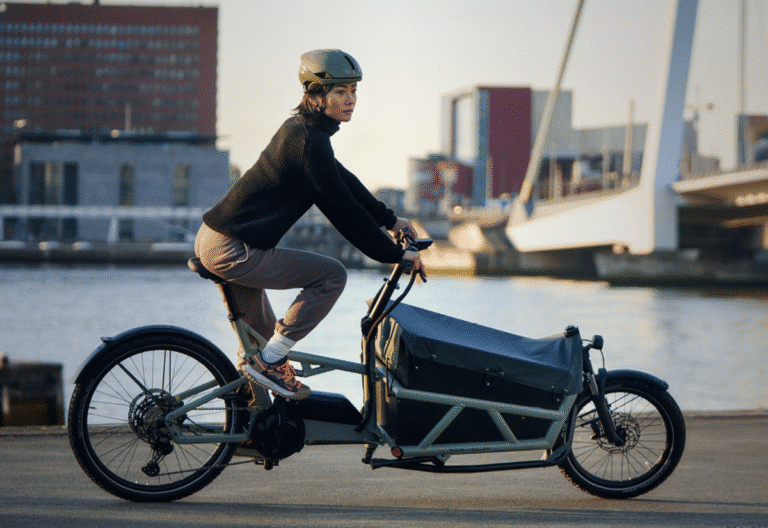At Regen, we know that tires are often overlooked when talking about the performance of an e-bike—until something goes wrong. As an OEM/ODM cargo bike manufacturer, we’ve spent years engineering bikes that withstand the real-world demands of delivery fleets, urban commuters, and family riders. One of the most frequent questions we get from our partners in procurement is: “How long do e-bike tires last?”
Let’s walk through the factors that affect tire lifespan, what makes cargo bike tires a special case, and how you can make smarter sourcing and maintenance decisions.
1. What Is The Average Lifespan of E-Bike Tires
For a typical city or trekking e-bike, the average tire lifespan ranges between 2,000 and 4,000 km. But this is just a rough baseline. We’ve seen high-end tires on lightweight city e-bikes last over 5,000 km in optimal conditions, while lower-grade tires used on heavier bikes or in tougher environments wear out much faster.
The average lifespan of e-bike tires typically ranges from 1,000 to 5,000 kilometers (about 600 to 3,100 miles), but this varies significantly based on several factors:
Key Factors Affecting E-Bike Tire Lifespan
| Factor | Effect |
|---|---|
| Rider Weight & Cargo Load | Heavier loads cause faster wear. |
| Tire Type | Road tires last longer than knobby or off-road tires. |
| Motor Power & Acceleration | High-torque motors wear tires faster. |
| Terrain | Rough surfaces and sharp debris shorten lifespan. |
| Riding Style | Aggressive cornering and braking increase wear. |
| Tire Pressure | Under-inflation accelerates tread degradation. |
| Brand & Quality | Premium brands like Schwalbe or Continental usually last longer. |
Typical Lifespan Ranges by Tire Type
| Tire Type | Average Lifespan (km) | Notes |
|---|---|---|
| City/Touring Tires | 3,000–5,000 km | Used on paved roads, moderate wear |
| MTB/Knobby Tires | 1,000–3,000 km | Off-road use leads to faster wear |
| Puncture-Resistant Tires | 4,000–7,000 km | Heavier, but longer-lasting |
| Cargo E-Bike Tires | 2,000–4,000 km | Heavier loads shorten life |
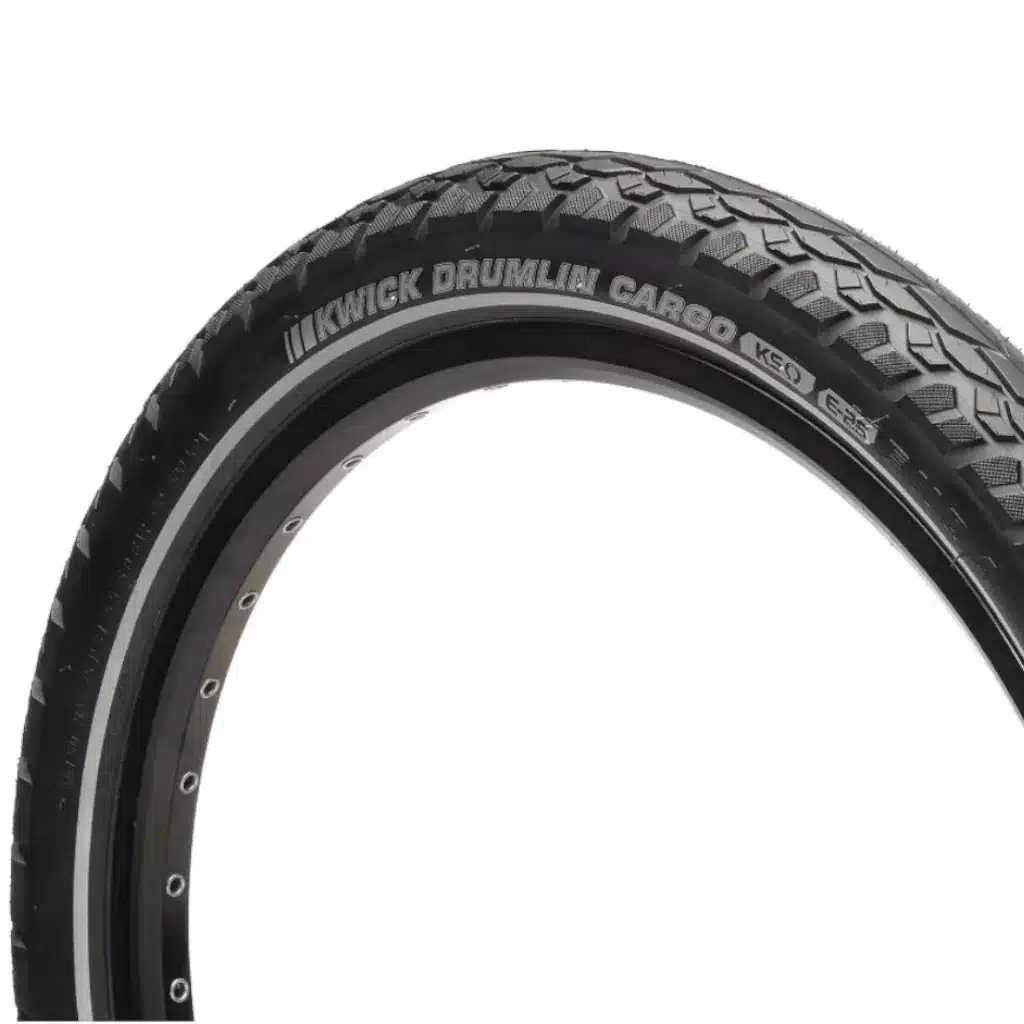
Maintenance Tips to Extend Tire Life
- Keep tires inflated to recommended PSI
- Rotate front and rear tires (if possible)
- Avoid hard braking and sharp turns
- Inspect regularly for embedded de
Several factors impact this range:
- Tire compound hardness: Softer compounds provide better grip but wear faster.
- Tire pressure: Underinflated tires wear more quickly and unevenly.
- Riding style: Aggressive cornering, heavy braking, and frequent curb hopping all shorten lifespan.
- Load weight: Heavier loads increase rolling resistance and heat, especially for cargo bikes.
- Road condition: Potholes, debris, or rough surfaces can cause premature wear or even sidewall failure.
2. Lifespan of Cargo Bike Tires: A Different Game
Cargo bikes—especially front-loading designs like the Long John—have very different tire demands. Our own models at Regen often operate under total system weights of 180–250 kg, including the rider, frame, motor system, and cargo.
This additional weight puts more stress on the tires in three ways:
- Accelerated tread wear: Expect about 30% shorter lifespan compared to standard e-bike tires.
- Increased risk of punctures: Especially in rear tires, which often carry more load.
- Sidewall fatigue: More noticeable on front tires due to steering forces and cargo shifts.
For commercial-use cargo bikes (think delivery or logistics fleets), tire replacement can be expected every 1,200 to 2,000 km, depending on load frequency, terrain, and tire model.
At Regen, we’ve found that selecting tires with reinforced sidewalls, anti-puncture layers, and high TPI (threads per inch) construction dramatically increases both safety and service life. Brands like Schwalbe, CST, and Kenda offer cargo-rated tires that we recommend for high-duty cycles.
3. Visual Signs Your Tires Need Replacing
If you’re managing a fleet, it’s good to train your maintenance staff or riders to look out for these early signs of tire wear:
- Worn-down tread pattern: Especially in the centre line.
- Visible casing or fabric threads: A serious safety hazard.
- Cracks or dryness on the sidewall: Sign of aging rubber.
- Increased puncture frequency: Indicates thinning protective layers.
- Flat spots or bulging: Often caused by curb impacts or defective beads.
At Regen, we recommend implementing routine tire checks every 500 km or bi-weekly for actively used commercial bikes.
4. Tire Types and Materials Matter
The composition and structure of the tire are critical to its durability. Here’s a quick breakdown of what we typically look for when specifying tires for our cargo bikes:
| Tire Feature | Impact on Lifespan |
|---|---|
| High TPI (>60) | More flexible, longer wear |
| Kevlar belts | Excellent puncture resistance |
| Dual-compound rubber | Better grip and longevity |
| Reflective sidewalls | Enhances safety but may degrade over time |
| Bead type (wire vs folding) | Folding tires are lighter but usually wear faster |
For our OEM partners looking to optimise long-term performance and minimise downtime, we typically recommend tires with E-50 or E-Load ratings, which are certified for e-bike speeds and heavier payloads.
5. Tips to Extend Tire Lifespan
Want to get the most out of your e-bike or cargo bike tires? Here’s what we advise:
- Keep tires inflated to the recommended PSI—check weekly.
- Avoid overloading the bike beyond its rated maximum payload.
- Rotate tires between front and rear (where design permits) for even wear.
- Store bikes away from direct sunlight and moisture, as UV and humidity degrade rubber.
- Use tire liners or sealants for high-risk delivery routes.
We also provide our cargo bike clients with maintenance guides and optional tire upgrade packages at the point of purchase—if you’re a fleet operator, talk to us about lifetime support options.
6. Planning for Fleet Maintenance
If you’re a fleet manager or procurement officer, understanding tire lifespan isn’t just about performance—it’s about costs. A worn-out tire is a safety risk, a downtime factor, and a hidden operational expense.
At Regen, we help our partners forecast tire replacement schedules based on:
- Estimated yearly mileage per vehicle
- Use case: delivery, family, or rental
- Climate and city terrain
- Brand-specific wear data (e.g. Schwalbe Pick-Up vs. CST Zeppelin)
This allows us to recommend smart tire strategies from day one—whether it’s budget-optimised models for light-duty or premium anti-puncture tires for urban logistics.
Conclusion
Tires are the only contact point between your bike and the road. Their role in safety, handling, and durability is too important to ignore—especially when you’re managing e-bike or cargo bike fleets.
We’re always happy to offer tailored guidance based on your usage profile and vehicle design. Whether you’re sourcing for a new product line or managing an existing fleet, Regen’s team of engineers and product advisors is here to help you choose the right tire spec for the job.
Feel free to reach out for technical advice, sample requests, or full tire lifecycle recommendations. We build our bikes to go the distance—make sure your tires can too.
References
- Schwalbe. (n.d.). E-bike and Cargo Tire Technologies. Retrieved from https://www.schwalbe.com/en/e-bike-tires
- Bosch eBike Systems. (2023). E-bike Maintenance Guide. Retrieved from https://www.bosch-ebike.com
- Cycling Weekly. (2024). How Long Do Bicycle Tires Last? Retrieved from https://www.cyclingweekly.com
- BikeRadar. (2023). Cargo Bike Tyre Buying Guide. Retrieved from https://www.bikeradar.com
- Kenda Tires. (n.d.). Cargo Bike Tire Product Specifications. Retrieved from https://www.kendatire.com
- CST Tires. (n.d.). Zeppelin Cargo Tire Features. Retrieved from https://www.csttires.com
- EN 15194:2017. Electrically Power Assisted Cycles – EPACs. European Committee for Standardization (CEN).


